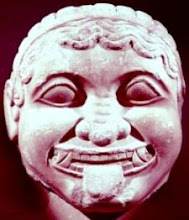The old wooden ship hull didn’t look like much when researchers first saw it: just broken, waterlogged boards and a few pieces of rusted metal, all stuck in the muddy bottom of a bug-infested Alabama bayou where an alligator and poisonous water moccasins swam nearby.
Months later, after hundreds of hours of study and testing, historians say the wreck is the Clotilda , the last ship known to transport African captives to the American South for enslavement.
The question now becomes what to do with the remnants of a ghostly vessel that’s a testament to the horror of human bondage.
Some have suggested raising the ship and putting it in a museum. Others want it to become the centerpiece of a national memorial to the slave trade. Leaving the remains in the Mobile River and marking the area reverently is another possibility.
Joycelyn Davis, a descendant of one of the Africans held captive aboard the ship, said she wants to somehow honor both the ship’s human cargo and the hard work of them and their descendants in forming Africatown USA , a coastal community where the Africans settled when they were freed from slavery after the Civil War.
«I got chills when it heard it,» said Davis, who still lives in the area.
James Delgado, a maritime archaeologist who helped lead the team that verified the wreck as the Clotilda, said Thursday that the ship’s remains are delicate but the potential for both research and inspiration are enormous.
«Nobody has ever found one of these this intact and been able to dig it up, and that is now possible,» said Delgado, of the Florida-based SEARCH Inc.
Officials with the Alabama Historical Commission will meet next week with residents in Africatown, just a few miles north of downtown Mobile, to detail the discovery and begin a discussion about the next steps.
The Clotilda’s unique dimensions made it a one-of-a-kind Gulf Coast schooner, and it made multiple cargo trips in the region before plantation owner Timothy Meaher of Mobile hired it in 1860 for an illegal trip to Africa to gather slaves, Delgado said.
Importation of slaves had been banned in 1808 and was punishable by death, so the Clotilda’s captain, William Foster, burned the vessel in a river bayou north of Mobile after unloading about 110 captives on to a steamboat.
Foster kept a detailed log of everything he did, Delgado said, and that helped lead to the discovery of the wreck.
A Mobile-area reporter, Ben Raines, spurred fresh interest in the Clotilda last year by publishing a detailed account of a wreck that could have been the Clotilda but turned out to be that of another wooden ship. The publicity resulted in a new search that led researchers to the spot where a wreck was found. A team descended on the wooden hulk to take measurements and gather a few loose pieces for analysis.
 |
| Forensic scientist Frankie West examines samples of wood from the ship’s hold in hopes of recovering DNA from captives’ blood or bodily fluids [Credit: Mark Thiessen/National Geographic] |
Using detailed archival records of more than 1,500 ship registries, researchers determined the half-buried ship was the exact size and shape of the Clotilda. It was also in the same spot and the same depth of water where the captain wrote of scuttling the vessel to hide evidence after its one and only voyage as a slaver, Delgado said.
«About half of the ship rises above the river bottom,» he said. «The hull is there, burned down to the waterline and above it in a few places.»
With a gator living nearby and snakes everywhere, research divers descended into the brackish, muddy coastal water to determine what remained. Visibility was virtually zero, and one diver standing in the hull nearly impaled herself on a broken plank, Delgado said.
«It is not a place anyone would want to dive,» he said.
But teams were able to gather a few loose planks and pieces of metal, Delgado said, and forensic analysis showed they matched materials that detailed records showed were used in the Clotilda’s construction.
One big question is what might be inside the still-unexcavated hold, where the African captives were kept. Delgado said the area could contain casks or food buckets or even manacles, but further excavation work is required.
While there are no known photographs of the Clotilda, Labarron Lewis of Mobile painted a giant roadside mural depicting the ship along a busy road through Africatown two years ago. The announcement of the ship’s discovery came as he was planning to touch up the painting, which was based on an image he found on the internet.
It also left Lewis wondering whether he is a descendant of the Clotilda’s last surviving African, Cudjo Lewis, who died in 1935 and was featured in the best-selling book «Barracoon» by the late Zora Neale Hurston, released last year.
«My granddaddy’s brother looked just like Cudjo Lewis,» the painter said.
Author: Jay Reeves | Source: The Associated Press [May 24, 2019]









Комментариев нет:
Отправить комментарий